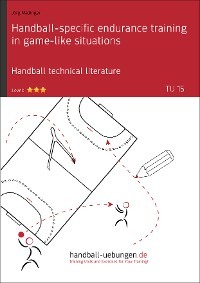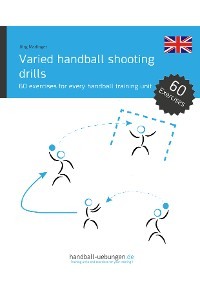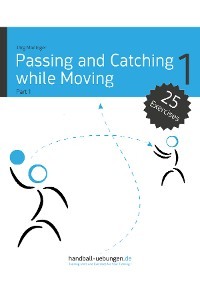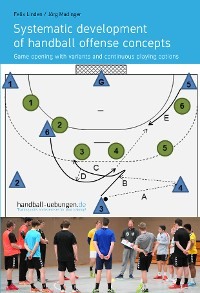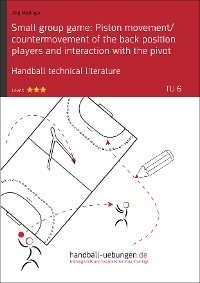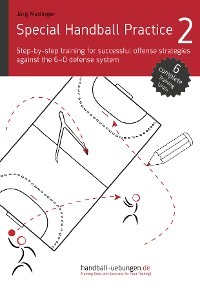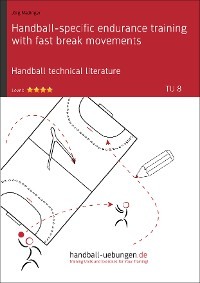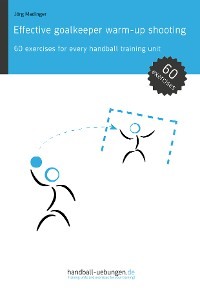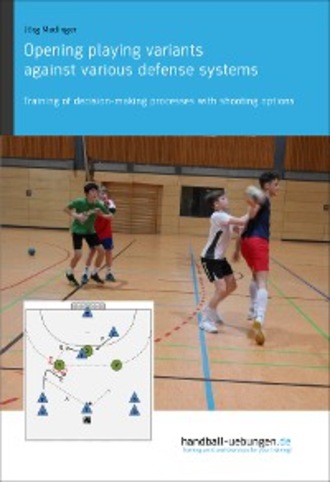
Полная версия
Opening playing variants against various defense systems

Introduction
Apart from individual technical and tactical skills, practicing different systems of cooperation may be useful to structure the offense play and force the defense to move in order to score a goal.
This textbook gives detailed step-by-step descriptions of initial actions and possible options for continuous playing against different defense systems. The playing variants aim at creating situations through team play in which the players are able to eventually shoot at the goal. If this is not possible because the defense players are very well-positioned, there are various continuous playing and subsequent shooting options explained in this book.
The first chapter initially deals with simple cooperations such as crossings, parallel piston movements, and interactions with the pivot – the essential building blocks for many of the subsequent 6-on-6 playing variants. In the other chapters, we will present examples of how to overcome passive and active defense cooperations.
A lot of the opening playing variants can be modified and used against other defense systems as well. It would be ideal, however, if the players practiced their decision-making processes in such a way that they are capable to react to changing situations and to adapt their playing creatively. This way, playing variants could be modified and extended spontaneously and lead to new shooting options over and over.
Part E deals with fast break playing options and playing options following a fast throw-off. The two last chapters focus on offense play against outnumbered defense systems, whereas the main focus will be on playing with an additional field player (goalkeeper substitution) and playing a subsequent attack in numerical superiority with a seventh field player following a time penalty against the defending team.
Publishing Information
1st edition (24 Mar 2020)
Published by DV Concept
Editors, design, and layout: Jörg Madinger, Elke Lackner
Post-editing: Nina-Maria Nahlenz
ISBN: 978-3-95641-267-7
This publication is listed in the catalogue of the German National Library. Please refer to http://dnb.de for bibliographic data.
The work and its components are protected by copyright. No reprinting, photomechanical reproduction, storing or processing in electronic systems without the publisher's written permission.
Key







Requirements









Part A: Cooperation in small groups
A1: Crossing and parallel piston movement
Recommended for overcoming these defense systems: all
Requirement:


Description:
In this series of exercises, the players develop crossing and parallel piston movements as cooperation options in width.
Key factors of success for the players initiating the piston/crossing movements:
- Vigorous initial action with binding of the defense player and hence creating space for the respective teammate.
- Breakthrough, if possible – depending on the respective defense player’s action.
Key factors of success for the teammate:
- Proper timing of the crossing and parallel piston movements.
- Decision: Crossing or parallel piston movement – depending on the defense players’ reactions.
Implementation:
Cooperation in width is a key prerequisite for the subsequent playing in larger groups and in the team against any defense system. Crossing and parallel piston movements are the fundamental building blocks of offense team play and are required in many playing sequences. The players should develop a good timing for the running and passing moves; this is why cooperation and team play should be practiced over and over in the individual training units.
A1.1 Preparatory exercise 1: Crossing
Setting:
- Put two cones on the floor to define the playing field.
- Two players stand on the left back, the other players on the center back position; one player starts as defense player.
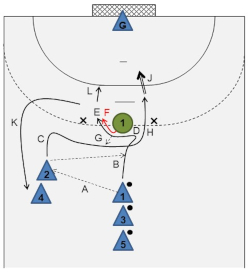
(Figure 1)
Course 1:
-


-


-





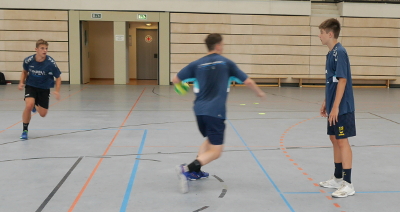
(Figure 2)
-


- Following the return pass (B),

-

- Following the action,



- After a few rounds, the players should do the course on the other side, with the right back player, i.e.





Course 2:
- The basic course remains the same as in course 1.
-

- Only if a direct breakthrough is impossible, he should pass the ball into the crossing movement path (G).
-

-

A1.2 Preparatory exercise 2: Parallel piston movement
Setting:
- Put two cones on the floor to define the playing field.
- The players stand on the left back and center back positions, spread evenly; two players start as defense players.
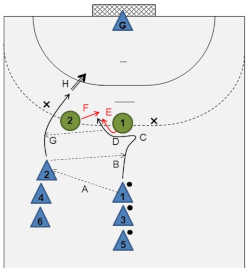
Course:
-


-


-



-



- As soon as


- Afterwards, repeat the sequence with the next two attacking players.


- Repeat the exercise on the right side after a few rounds.
- Switch the defense players at regular intervals.









A1.3 Implementation: Crossing and parallel piston movement 2-on-2
Setting:
- Put two cones on the floor to define the playing field.
Basic idea:
- The players now combine the two prior exercises, so that they have to make proper decisions several times in a row.
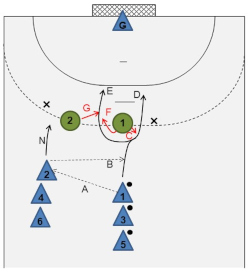
(Figure 1)
Course:
-


-


-


→ If


→ If


- Depending on the defense players’ movement,

→ If



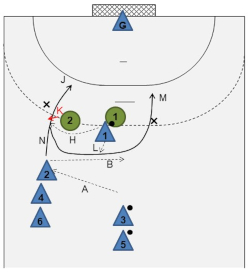
(Figure 2)
→ If








- Parallel piston movement (J).
- Taking on the crossing (L and M).
Competition:
-


- Following this, it is the next two players’ turn to play defense. Repeat until each player has played defense once.
- Which attacking teams of 2 have scored highest?

A2: Interaction of the back position players with the pivot using the Russian Screen
Recommended for overcoming these defense systems: all
Requirement:


Description:
In this series of exercises, the players use a Russian Screen as a team play option in depth.
Factors of success for the pivot:
- Correct screening and proper timing to block the defense player’s movements.
- Leaving the screen in direction of the ball (not behind the defense player), as late as possible, however.
- Picking up the ball and shoot under pressure.
- Catch the ball with one hand, if necessary.
Factors of success for the back position player:
- Dynamic shifting.
- Making the correct decision depending on the defense player’s behavior: shoot / breakthrough or pass to the pivot.
- Different passing variants when passing the ball to the pivot.
Implementation:
The basic 2-on-2 cooperation with the pivot may be used against any defense systems, i.e. both against offensive defense systems (3-2-1 defense and 1-5 defense systems) and against a 6-0 defense system with forward-stepping defense players.
A2.1 Preparatory exercise 1: Series of shots for the back position player
Basic course:
-




